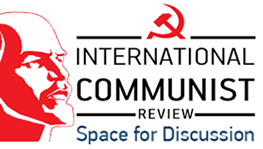The Central and Eastern European countries, which led bitter struggles during the years 1945--1948 to build socialism, had much less experience than did the Soviet Party. Ideologically, they were not solid: the fact that hundreds of thousands of new members joined, often coming from social-democratic circles, made them easily subject to opportunism and bourgeois nationalism.
At the time of the German invasion in 1941, the clandestine Yugoslav Party had 12,000 members; 8,000 of these were killed during the war. But it gained 140,000 members during the resistance and 360,000 more before mid-1948. Tens of thousands of kulaks, bourgeois and petit-bourgeois had joined the Party.
As early as 1948, the anti-Soviet social-democratic model was adopted by the leadership of the Yugoslav Communist Party.
The Party had no normal internal life, there was no political discussion, so no Marxist-Leninist criticism and self-criticism; the leaders were not elected but chosen.
In June 1948, the Information Bureau of the Communist Parties, including eight parties, published a resolution criticizing the Yugoslav Party. It underscored that Tito payed no attention to the increase in class differences in the countryside nor to the rise of capitalist elements in the country.
Once this criticism was published, Tito set off a massive purge. All the Marxist-Leninist elements of the Party were wiped out. Two members of the Central Committee, Zhujovic and Hebrang, had already been arrested in April 1948. General Arso Jovanovic, Chief of Staff of the Partisan Army, was arrested and assassinated, as was General Slavko Rodic.
But, a few months later, the Titoists publicly took up the old social-democratic theory of passing from capitalism to socialism without class struggle! Bebler, Vice-Minister of External Affairs, declared in May 1949: "We have no kulaks such as there were in the U.S.S.R. Our rich peasants took part en masse in the people's liberation war.... Would it be a mistake if we succeeded in getting the kulaks to pass over to socialism without class struggle?“
In 1951, Tito compared the Yugoslav Communists who remained loyal Marxist-Leninists to the Hitlerian Fifth Column, thereby justifying the arrest of more than 200,000 Communists, according to Colonel Vladimir Dapcevic’s testimony. Tito wrote: "The attacks of the fascist aggressors have proved that much importance can be attributed to a new element: the Fifth Column. It is a political and military element that gets into gear in preparation for aggression. Today, something similar is being attempted in our country, under different forms, particularly by the Cominterm countries".
Milovan Djilas, member of CPY Politburo, called the Soviet state a "monstrous edifice of state capitalism" that "oppressed and exploited the proletariat". Still according to Djilas, Stalin fought "to increase his state capitalist empire and, internally, to reinforce the bureaucracy". "The Iron Curtain, hegemony over the countries of Eastern Europe and an aggressive political line have become indispensable to him". M. Djilas spoke of "the misery of the working class that works for the bureaucracy's interests and the bureaucracy's privileges." "Today, the USSR is objectively the most reactionary power". Stalin "practices state capitalism and is the head and spiritual and political leader of the bureaucratic dictatorship", continued "Some of the Hitlerian theories are identical to Stalin's theories, both from the standpoint of their contents and of the resulting social practice".
In 1948, Kardelj, member of CPY Politburo, was still claiming to be faithful to the anti-imperialist struggle. Two years later, Yugoslavia upheld the U.S. war against Korea. The London Times reported: "Mr. Dedijer sees events in Korea as a manifestation of the Soviet will to dominate the world ... if this is to be resisted successfully ... the workers of the world must `realize that yet another pretender to world domination has appeared, and get rid of illusions about the Soviet Union representing some alleged force of democracy and peace".
So Tito had become a simple pawn in U.S. anti-Communist strategy. Tito declared to the New York Herald Tribune that "in the event of a Soviet attack anywhere in Europe, even if the thrust should be miles away from Yugoslavia's own borders', he would `instantly do battles on the side of the West ... Yugoslavia consider itself part of the collective security wall being built against Soviet imperialism".
In the economic field, the socialist measures that Yugoslavia had taken before 1948 were liquidated. Alexander Clifford, the Daily Mail correspondent, wrote about the economic reforms adopted in 1951: "If it comes off, Yugoslavia looks like ending up a good deal less socialised than Britain: price of goods ... determined by the market - that is, by supply and demand; wages and salaries ... fixed on the basis of the income or profits of the enterprise; economic enterprises that decide independently what to produce and in what quantities; there isn't much classical Marxism in all of that".
The Anglo-American bourgeoisie soon recognized that Tito was to be a very effective weapon in its anti-Communist struggles. The April 12, 1950 issue of Business Week reads: "For the United States in particular and the West in general this encouragement of Tito has proved to be one of the cheapest ways yet of containing Russian Communism. To date the West's aid to Tito has come to $51.7 million. This is far less than the billion dollars or so that the United States has spent in Greece for the same purpose".
From its 7th congress of April 1958, the Yugoslav party held that Communists "should no longer be concerned primarily with questions relating to the overthrow of capitalism", that it was possible to achieve socialism without a revolution and those Communist parties need not enjoy a power monopoly in pursuit of socialism.
